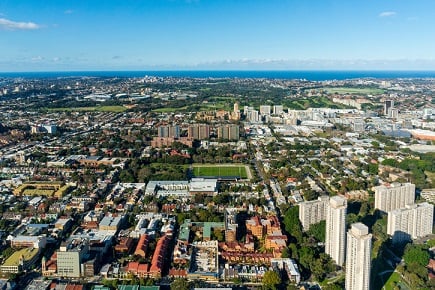Strong jobs growth is likely to fuel housing demand and property price growth in these areas

The latest analysis from property market research firm Propertyology has identified the locations were robust jobs growth is likely to stimulate housing demand and property-price growth.
Propertyology analysed national jobs data from the Australian Bureau of Statistics (ABS) for the 2017 calendar year to identify the urban and regional locations where housing demand is set to skyrocket.
“Contrary to general belief, population growth is not the biggest influence on property prices – far from it,” said Simon Pressley, head of property market research at Propertyology. “There are a range of factors that influence the demand side of the property-price equation. Aside from affordability, the biggest influence is economic conditions. Tracking trends of job volumes is a more reliable measurement of the direction that a localised economy is heading than looking at an isolated unemployment rate.”
At a capital city level, the analysis revealed that Melbourne (10%), Hobart (9.8%), and Canberra (8.7%) produced the largest increases in jobs over the past two years.
At the other extreme, jobs in Brisbane’s CBD only increased by 1.9% over the same period, a reflection of continued lacklustre growth in the post-mining-boom economy.
Propertyology’s analysis also revealed a number of regional areas that are making great strides in terms of jobs growth, beating the two-year national average of 6.6%.
According to Pressley, Albury, Armidale, Ballarat, Ballina, Bowral, Cairns, Coffs Harbour, Dubbo, Mackay, Muswellbrook, Port Macquarie, Townsville, Warragul, and Warrnambool are all likely to see increased market activity over the coming year or two.
“Sustained jobs growth within a community puts more money in people’s pockets, attracts new people to a region, and boosts local confidence,” Pressley said. “It increases the chances of renters becoming homeowners, provides homeowners with confidence to renovate, increases demand for local goods and services, and gets more people at open homes.”
Jobs growth in cities and regions across three states can be found in the table below:
|
|
|
State Total |
Capital City |
Top Performers |
|
Bottom Performers |
|
|
|
|
|
|
Capital |
Regions |
Capital |
Regions |
|
NSW |
YE 2017 |
6.6% |
6.0% |
Baulkham Hills – Hawkesbury (9.5%)
CBD & Inner-South (9.3%) |
Southern Highlands (23.0%) Coffs Harbour – Grafton (18.0%) New England (17.4%) |
South-West (0.8%)
Northern Beaches (-3.2%) |
Far West (-7.3%)
Newcastle-Lake Macquarie (-3.9%) |
|
|
|
|
|
|
|
|
|
|
|
2YE 2017 |
6.6% |
7.3% |
CBD & Inner-South (18.0%)
Baulkham Hills – Hawkesbury (13.8%) |
Mid-North Coast (15.4%) Upper-Hunter (10.5%)
Orana (10.2%) |
Ryde (1.0%)
Inner-West (1.2%) |
Central West
Riverina (-8.4%) |
|
VIC |
YE 2017 |
5.3% |
5.4% |
West-Melbourne (9.3%)
North-West Melbourne (8.0%) |
North-West (20.6%) Hume (14.2%) Warrnambool (13.1%) |
Mornington Peninsula (-3.3%)
Inner-East (3.3%) |
Bendigo (-2.6%) Shepparton (-2.0%) Ballarat (-0.2%) |
|
|
2YE 2017 |
9.7% |
10.0% |
North-West Melbourne (17.2%) North-East Melbourne (16.2%)
Inner-City (15.7%) |
North-West Victoria (28.5%) Warrnambool (17.4%) Ballarat (13.2%)
Latrobe-Gippsland (10.5%) |
Inner-South (2.3%) Mornington Peninsula (4.0%)
|
Bendigo (-6.1%)
Shepparton |
|
QLD |
YE 2017 |
6.5% |
7.6% |
East Brisbane (11.5%)
South Brisbane (10.3%) |
Townsville (13.7%) Mackay (8.4%) |
West Brisbane (1.3%)
Moreton Bay South (1.4%) |
Wide Bay (-0.4%)
Toowoomba |
|
|
2YE 2017 |
5.2% |
7.2% |
Logan-Beaudesert (19.8%) North Brisbane (14.3%)
Ipswich (13.2%) |
Mackay (17.5%)
Cairns (12.0%) |
West Brisbane (-1.9%)
Inner-City (1.9%) |
Fitzroy (-8.9%) Darling Downs (-5.4%)
Sunshine Coast |



